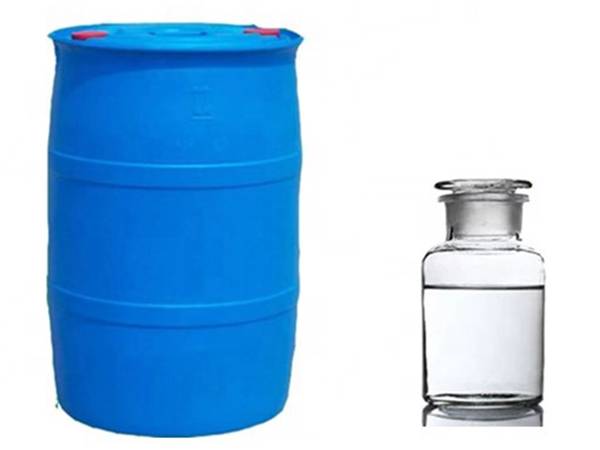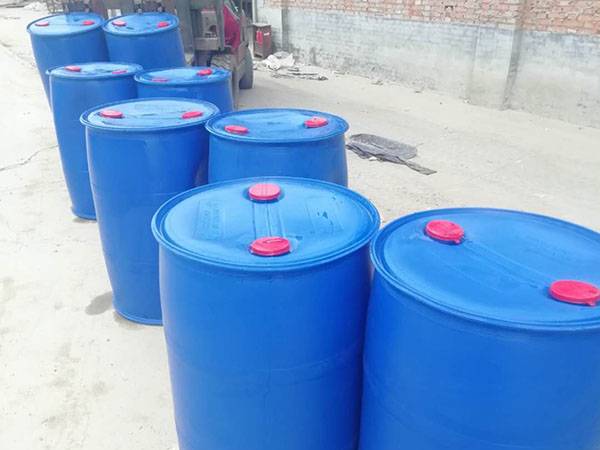PASP
Polyaspartic acid (PASP) belongs to a class of polyamino acids. Polyaspartic acid is susceptible to cleavage by the action of microorganisms and fungi due to the peptide bonds on the main chain of its structure. The final degradation products are ammonia, carbon dioxide and water which are harmless to the environment. Therefore, polyaspartic acid has a wide range of uses. It can be used in water treatment, medicine, agriculture, daily chemical and other fields. As a water treatment agent, its main function is scale inhibition and/or dispersion, as well as corrosion inhibition. As a scale inhibitor, it is particularly suitable for inhibiting the formation of calcium carbonate scale, calcium sulfate scale, barium sulfate scale and calcium phosphate scale in cooling water, boiler water and reverse osmosis treatment. The scale inhibition rate of calcium carbonate can reach 100%. Polyaspartic acid also has a dispersing effect and can effectively prevent corrosion of metal equipment. Polyaspartic acid has a synergistic effect with organophosphorus corrosion and scale inhibitors, often with vinyl polymer dispersants (such as polyacrylic acid, hydrolyzed polymaleic anhydride, acrylic acid-ethyl acrylate-itaconic acid copolymer, etc.) , Phosphine compound corrosion and scale inhibitors (such as HEDP, ATMP, PBTCA, etc.) are compounded into efficient, multi-functional corrosion and scale inhibitors.
Specification:
| Product Name | Polyaspartic acid sodium salt liquid |
Polyaspartic acid sodium salt solid |
| Delivery Form | solution | powder |
| Appearance | Light yellow to red brown | Light yellow |
| PASP [% w/w] | >40 | >93 |
| Water [% w/w] | < 60 | <10 |
| Odor | very low | odorless |
| pH-Value 10% solution | 9.5 – 10.5 | 9.0-11.0 |
| Density at 20°C [g/ml] | 1.30-1.38 | - – - |
| Bulk Density [kg/Liter] | - – - | 0.33 – 0.77 |
| Viscosity at 20°C [mPa*s] | 50-70 | - – - |
| Solubility in water at 20 °C | each ratio | 56 |
Scope of application
1. As a new type of green water treatment agent, polyaspartic acid is applied to the field of industrial circulating cooling water treatment. Polyaspartic acid can chelate multivalent metal ions such as calcium, magnesium, copper, iron, etc. It can especially change the crystal structure of calcium salt to form soft scale. It can be used in industrial circulating water, boiler water, reverse osmosis water, and oil fields. In water, seawater desalination and other water treatment fields, it performs well in systems with high hardness, high alkalinity, high pH value, and high concentration multiples. PASP scale inhibition effect is better than commonly used phosphine-containing scale inhibitors. PASP and PBTCA have a synergistic effect after compounding.
2. Polyaspartic acid is used as a metal corrosion inhibitor. Polyaspartic acid can get better corrosion inhibition effect when the pH is above 10. The lower concentration of polyaspartic acid at pH 8-9 has a better corrosion inhibition effect in seawater. Polyaspartic acid is compounded with organophosphorus, sodium tungstate, quaternary ammonium salt, zinc salt, molybdate, oxidized starch, etc., to achieve better corrosion inhibition effects.
3. The application of polyaspartic acid in the agricultural field. Polyaspartic acid itself is not a fertilizer, but it can be used as a fertilizer synergist. Polyaspartic acid has a chelating effect on metal ions. Polyaspartic acid with a certain molecular weight can enrich nitrogen, phosphorus, potassium and trace elements to supply plants, so that plants can use fertilizers more effectively, and improve crop yield and quality. . The addition of polyaspartic acid can increase crop yields and improve soil quality.
4. The application of polyaspartic acid in the field of medicine. The anti-tumor drug cisplatin is embedded in polymer micelles, polyethylene glycol-polyaspartic acid, and the hydrophobic oligo-aspartic acid can stabilize the micelles, so that the micelles can be used As a drug carrier. Polyaspartic acid protects tubule cells by preventing the electrophysiological changes of substances containing aminoguanidine groups. Polyaspartic acid has an inhibitory effect on gentamicin’s interference with cochlear phospholipid tissue metabolism.
5. The application of polyaspartic acid in the field of hygiene. As a new type of polymer, polyaspartic acid can react with a crosslinking agent to further synthesize a super absorbent. This absorbent is easy to degrade and can be used as a fertilizer after degradation without causing any pollution to the environment. The characteristics meet the requirements of sanitary products for super absorbent resin.
6. Polyaspartic acid can be used as a cleaning agent, not only can replace phosphorous detergents, but also can be added to dishwashing detergents because of its safety, non-toxicity and non-irritation. Cleaning effect. It can also be used as a drilling fluid viscosity reducer, coal water slurry dispersant, detergent synergist, etc., and can also be used in cosmetics and health products.
As a fertilizer synergist, polyaspartic acid can intensify the overall absorption of N, P, K and trace elements by crops. The effect is remarkable. It is suitable for a variety of crops and soils. Its main effects are as follows:
(1) Improve fertilizer utilization. After applying polyaspartic acid, about 22% of chemical fertilizer can be saved per mu on average.
(2) Promote crop growth and increase crop yield. The mixed use of polyaspartic acid and chemical fertilizers can increase the yield of different crops by 8-30% and promote the absorption of medium and trace elements.
(3) Promote root growth and enhance stress resistance.
(4) Green environmental protection and soil improvement. Polyaspartic acid, which is a “green product”, can reduce the adverse effects of excessive fertilization on the environment, activate nutrient elements in the soil, increase fertilizer utilization, and improve soil quality.
Package & Storage
For liquid form: 250kg/drum,4drums/pallet ;1250kg/IBC; or filled with flexitank
For solid form:20kg/bag,25bags/pallet
Please storage under dry and ventilated condition.
Healthy & Safety information
The use of proper protective equipment is recommended when using this product. Wash thoroughly after handling. Store the product in a cool, dry, well-ventilated area away from incompatible materials. Before handling this material, read the corresponding SDS for safety, health and environmental data












